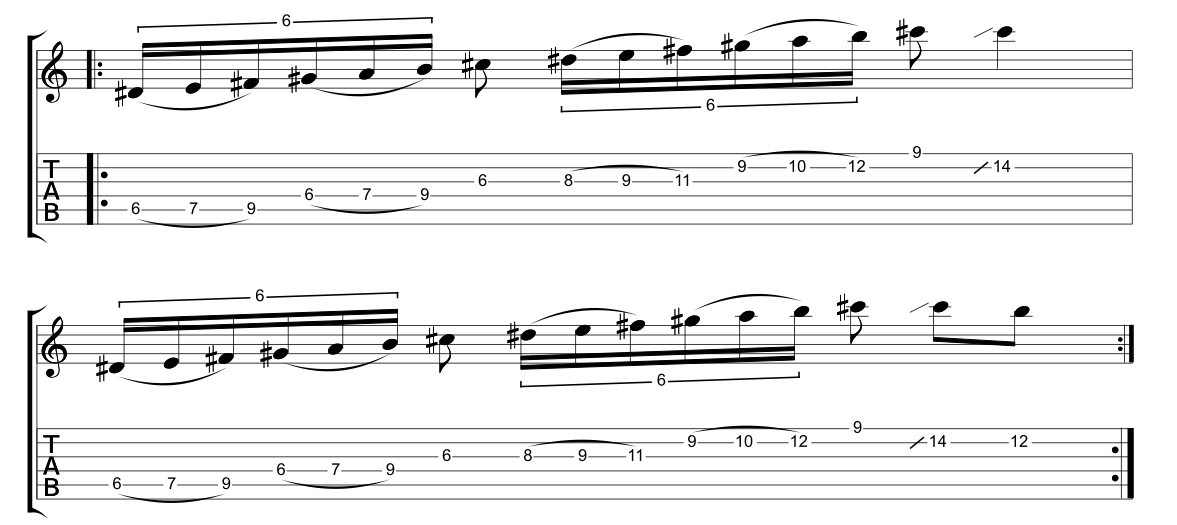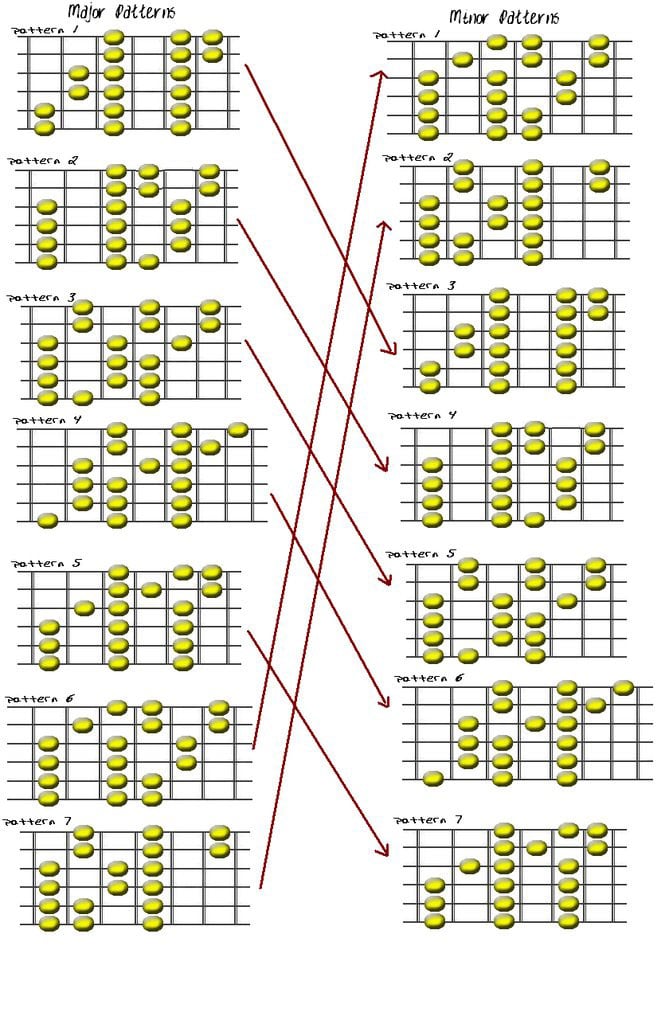3 Notes Per String
Three-note-per-string Scales The 5 block CAGED system isn’t the only way to view the neck. Here I’ve written out the F major scale and its related modes with 3 notes on each string, which divides the neck up into 7 overlapping areas. Step 1: Three Notes Per String Here I graph out a pattern for the E minor pentatonic, playing three notes per string. You can look at it as the combination of Pattern 4 and Pattern 5 in E minor, if you’re familiar with the CAGED system or simply as a pattern itself.


You don’t have to memorize or even use the patterns described here, but it’s recommended that you experiment with them to see how they feel. Consider it an exercise in exploring your options. If you find that you prefer playing major scales in this way, then go ahead and do so.What’s nice about the seven patterns shown here is that each one starts on a different scale degree on the 6th string, with all seven scale degrees getting touched. This doesn’t happen when you divide the neck into five patterns.
Three Notes Per String Licks
Don’t think of these sample fingerings as strict rules you have to follow; they’re really just a starting point. You may find that you can play these patterns better by using a different fingering, and that’s perfectly fine. If you don’t like the long stretches that three-notes-per-string patterns make, you may choose to use five patterns. That’s also fine. Just find what works best for you.Continue to connect the seven three-notes-per-string patterns until you either run out of frets or can’t reach any higher. When you’re ready to move on, start the seven patterns in other positions and play them in new keys.
3 Notes Per String Major Scale

Don’t forget to try playing along with some accompaniment as you go. As you continue learning based in the major scale, you’ll find that some players compose using three notes per string.